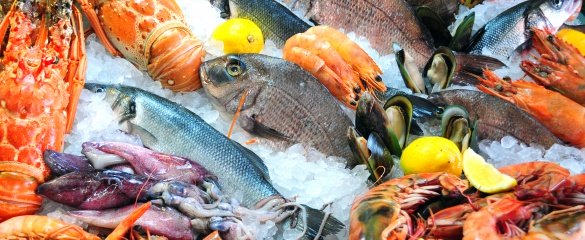Extreme weather and a changing climate are presenting new threats to the safety of our fish, seafood and vegetables, according to European scientists who are working out how to keep our food safe to eat.
Fish and vegetables form an important part of a healthy diet but only if they are safe to eat when they reach your dinner plate. Food-borne and diarrhoeal disease kills two million people per year, including children.
Professor Mieke Uyttendaele, from the University of Ghent, Belgium, who is looking into the safety of vegetables, says that extreme weather such as floods can lead to contamination, whereas drier periods could make water a scarce resource. Both of these can impact on the safety of crops.
‘In Spain, where it’s getting drier, they may have water scarcity and then the quality of water is getting important,’ said Prof. Uyttendaele. ‘It might be that we see in Belgium and the Netherlands more heavy rain.’
‘Mould is also something that can grow in humid, warm conditions. If it’s humid you should start to think, “Can these moulds make mycotoxins?”.’
Prof. Uyttendaele led the EU-funded VEG-i-TRADE project, which worked with vegetable producers both within the EU and in other countries such as Brazil and India to minimise microbial and chemical hazards. The aim was to improve the safety of production methods and supply chains.
The team worked mainly with primary producers, who are vulnerable to climate change. They assessed the current techniques being used and where improvements could be made in areas such as water treatments, irrigation methods, storage conditions, and sampling.
According to Prof. Uyttendaele, vegetables are often overlooked when it comes to issues of food safety, as efforts are usually concentrated on products of animal origin.
However, toxins in vegetables can have serious implications for health and economics. In 2011 an E. coli outbreak in Germany, traced to a crop of fenugreek sprouts, caused EUR 1.2 billion in losses for farmers and industries and cost EUR 215 million in emergency aid.
Prof. Uyttendaele said that solutions don’t have to be hi-tech. ‘You can gain a lot in simple things. If you add it together it has a significant effect.’
Climate change could also threaten the safety of our seafood as increased sea water temperatures and acidity levels can promote the spread of contaminants.
‘The temperature can promote the release of contaminants from the sediment, and the pH (acidity) as well,’ said Dr António Marques from the Portuguese Institute for the Sea and Atmosphere.
‘There is the possibility that these contaminants become more available in the environment for the marine organisms to uptake. If the temperature increases, their metabolism will be faster thus affecting the accumulation of contaminants by these organisms.’
Another effect of warmer waters could be an increase in toxic algaes, which pose a threat to seafood safety.
Dr Marques coordinates the EU-funded ECSafeSEAFOOD project, which is assessing the effect of environmental contamination on fish and seafood, and the risk to consumers. The team is mapping the level of contaminants in different marine species, as well as investigating how widely they are consumed and how toxic they are.
‘In the last decades many industries have created diverse chemical compounds that are being used in several products that we use every day, and these chemical compounds are released into the environment,’ said Dr Marques.
The project is specifically looking at new, unregulated compounds coming from the pharmaceutical and personal care industries, such as UV filters in suncream and flame retardants and microplastics from plastic bags. They are released into the sea through wastewater.
The idea is to provide a basis for new regulation if these compounds are deemed to be a health risk.
The ECSafeSEAFOOD team has already analysed a wide variety of common species from six sites that span Europe from the Mediterranean to Norway, in order to get a general overview of which contaminants could pose a problem. They are now starting to look at the specific risks associated with commercial fish and seafood species.
Alongside this work, the researchers are developing more cost-effective detection tools for authorities and fish processors to check if supplies are fit to be eaten, and working on ways to reduce the levels of contaminants, for example by introducing micro-algae which can remove them from seawater.
Dr Marques says he has been surprised by the diversity of compounds found so far and says the assessments must continue beyond this one project.
‘As we are speaking the industry from the different sectors are every day creating new chemical compounds.’




